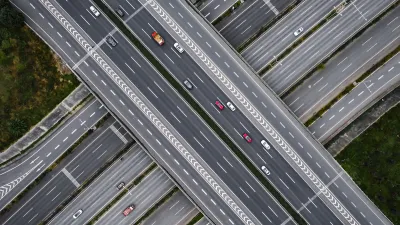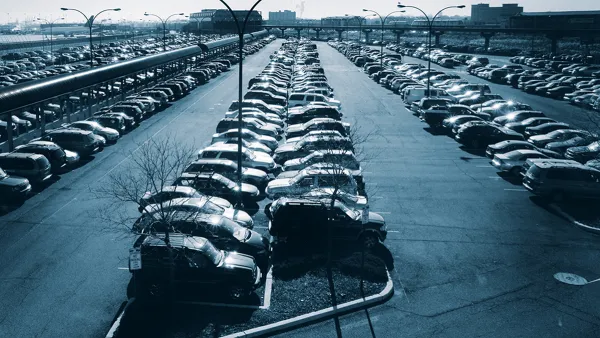While most of the world’s population doesn’t drive, cars have an outsized negative impact on public health, the environment, and land use.

A wide-ranging new analysis of “automobility” reveals the many ways that car-dependent design harms people and neighborhoods, writes Kea Wilson in Streetsblog USA. “Just taking into account car crashes and fatalities linked directly to car-related air pollution and lead exposure, automobility kills at least 1.67 million people around the world every year — a total of 60 to 80 million since the advent of the automobile.”
Beyond road deaths, the analysis shows how cars also contribute to pollution, worsening health, inefficient land use, and more. The analysis seeks to move away from a cost-benefit analysis that puts a price on human lives and environmental health and evaluates the broader harms that a car-centric culture causes. “From car crashes to pollution, virtually every item on this list disproportionately impacts socially and racially marginalized people — not least people who don’t drive, which the study authors point out constitutes ‘most people on the planet.’”
FULL STORY: All The Ways That Car Domination Harm Communities (Well, Almost All…)

National Parks Layoffs Will Cause Communities to Lose Billions
Thousands of essential park workers were laid off this week, just before the busy spring break season.

Retro-silient?: America’s First “Eco-burb,” The Woodlands Turns 50
A master-planned community north of Houston offers lessons on green infrastructure and resilient design, but falls short of its founder’s lofty affordability and walkability goals.

Delivering for America Plan Will Downgrade Mail Service in at Least 49.5 Percent of Zip Codes
Republican and Democrat lawmakers criticize the plan for its disproportionate negative impact on rural communities.

Test News Post 1
This is a summary

Test News Headline 46
Test for the image on the front page.

Balancing Bombs and Butterflies: How the National Guard Protects a Rare Species
The National Guard at Fort Indiantown Gap uses GIS technology and land management strategies to balance military training with conservation efforts, ensuring the survival of the rare eastern regal fritillary butterfly.
Urban Design for Planners 1: Software Tools
This six-course series explores essential urban design concepts using open source software and equips planners with the tools they need to participate fully in the urban design process.
Planning for Universal Design
Learn the tools for implementing Universal Design in planning regulations.
EMC Planning Group, Inc.
Planetizen
Planetizen
Mpact (formerly Rail~Volution)
Great Falls Development Authority, Inc.
HUDs Office of Policy Development and Research
NYU Wagner Graduate School of Public Service





























